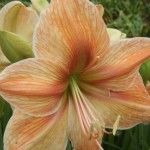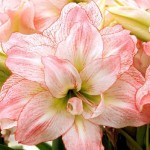If you like ornamental grasses but do not have a good sunny spot, purpletop grass (Tridens flavus) may be just what you’re looking for. Although it prefers full sun, purpletop does quite well in shade (just not full shade). This perennial native bunch grass* is not fussy at all. In addition to tolerating a wide range of light conditions, it adapts well to a variety of soil types, from clay-loam to sand and from slightly moist to dry.
Purpletop grass is native from Vermont and New Hampshire, south to Florida, west to New Mexico and north to Minnesota. It also occurs in California. The foliage grows to 12 to 18 inches in height with 3 to 4 foot flower culms (stems) above. The inflorescence is purplish-red (sometimes almost black) and holds its color for a long time. Like most ornamental grasses, it’s blooming now (late summer/fall).
Although purpletop may not look like much along the roadside, it can make a beautiful addition to your landscape. It makes a real pretty mass planting. Having said that, this might be a good time to bring up the subject of ‘low-maintenance native plants’. Yes, once they’re established, many native plants can mostly be left to survive on their own if that’s your intention. Customers sometimes tell us they want native plants because they perceive they’re easier, and they will not have to spend any time or effort on them. However most of us expect something a bit beyond mere survival from the plants in our yards. We want our yards and gardens to be beautiful. In nature most native plants survive periods of drought in one form or another, but they sometimes look half dead until the rains come again. Give them adequate water when nature does not, and I promise you’ll be much happier with the results.
Low maintenance is important, but at Native Nurseries we especially value native plants for their food value and importance to native wildlife. Purpletop grass is a good choice for this purpose. It is a larval food for at least half a dozen skipper butterfly species, small mammals eat the foliage and birds eat the seed and use the plant for nesting material. It is even good forage for livestock.
So, are you ready to give purpletop grass a try? As usual I have sold myself. It just occurred to me that it might be just the thing for a certain spot in my yard I’ve been mulling over—a certain spot that gets light shade. Hmmmm. We have some real pretty gallons in stock right now. I’ll give you all till Saturday closing—then what’s left is mine. :)
* Forms a clump as opposed to grasses that creep or spread. The base of the bunch grass gradually increases in size.
At Native Nurseries, we stock purpletop grass in 1-gallon pots when we have it (usually in the fall when it's blooming). As always, give us a call to check availability before making a special trip (although we’re always happy to see you). Sorry . . . we do not ship plants.
Some information for this blog post came from the following sources –
Common Grasses of Florida and the Southeast by Lewis L. Yarlett
https://edis.ifas.ufl.edu/pdffiles/EP/EP34100.pdf
http://fnpsblog.blogspot.com/2011/02/florida-wildflower-garden.html
http://extension.uga.edu/publications/detail.cfm?number=B987-4










